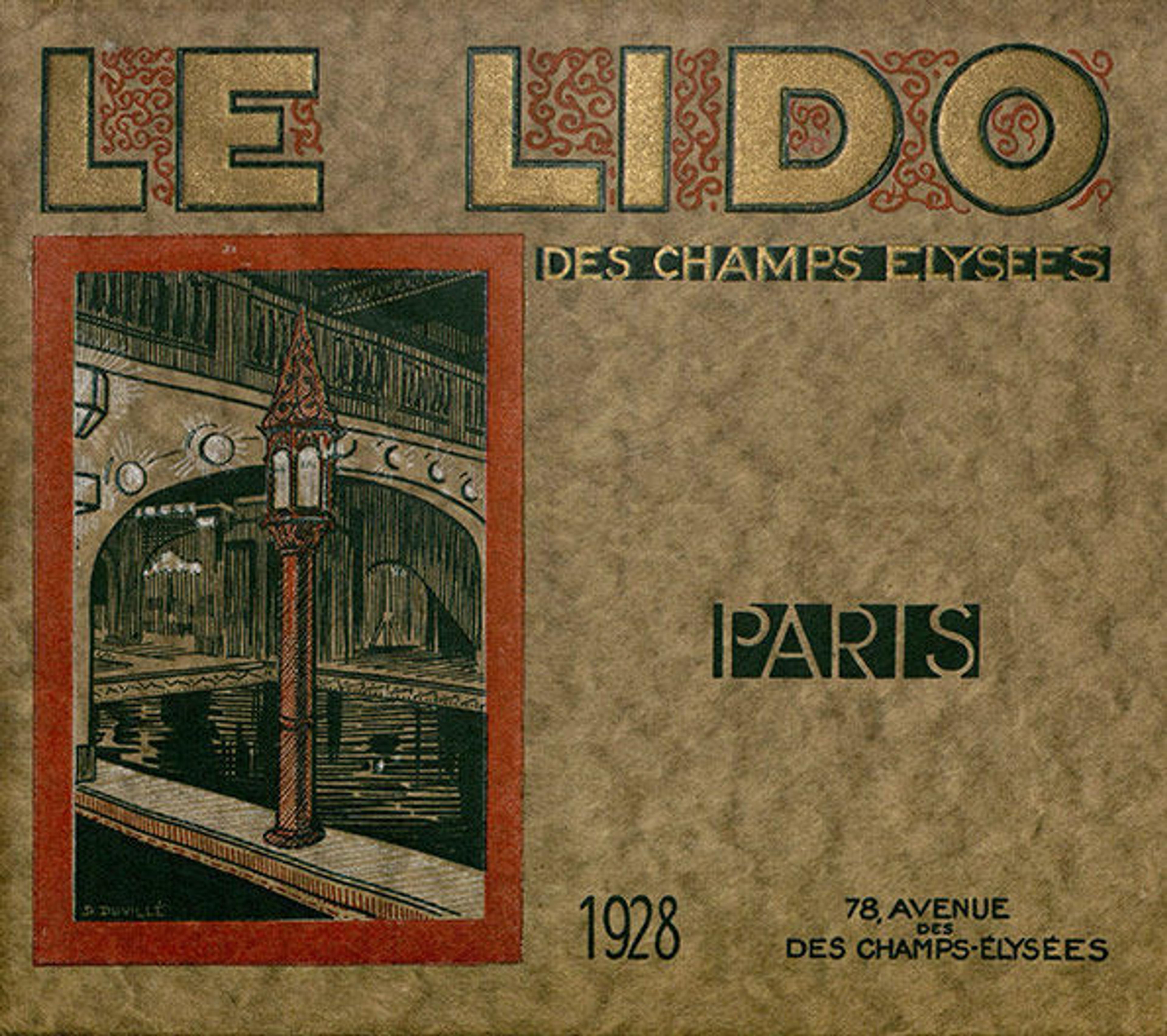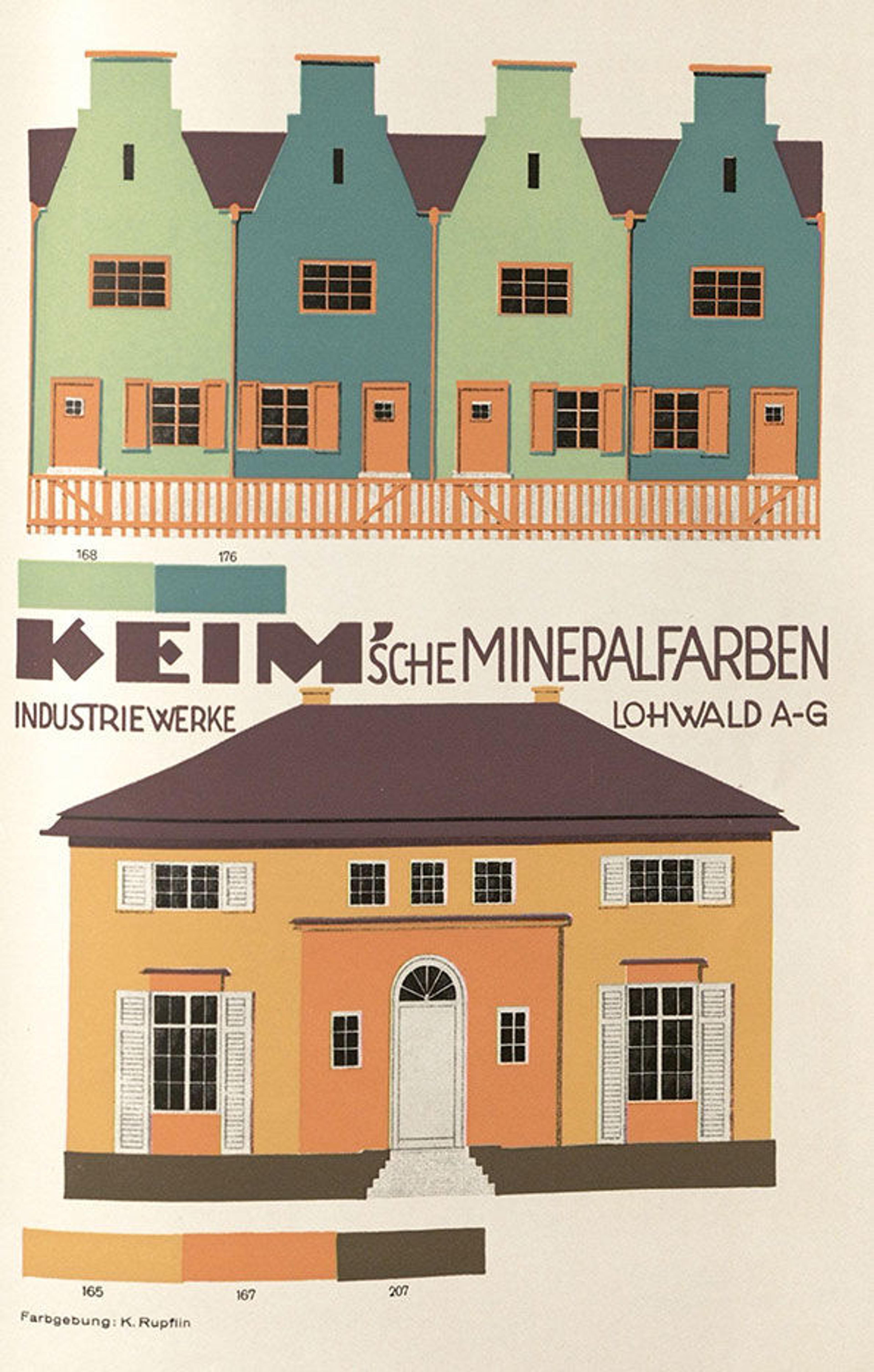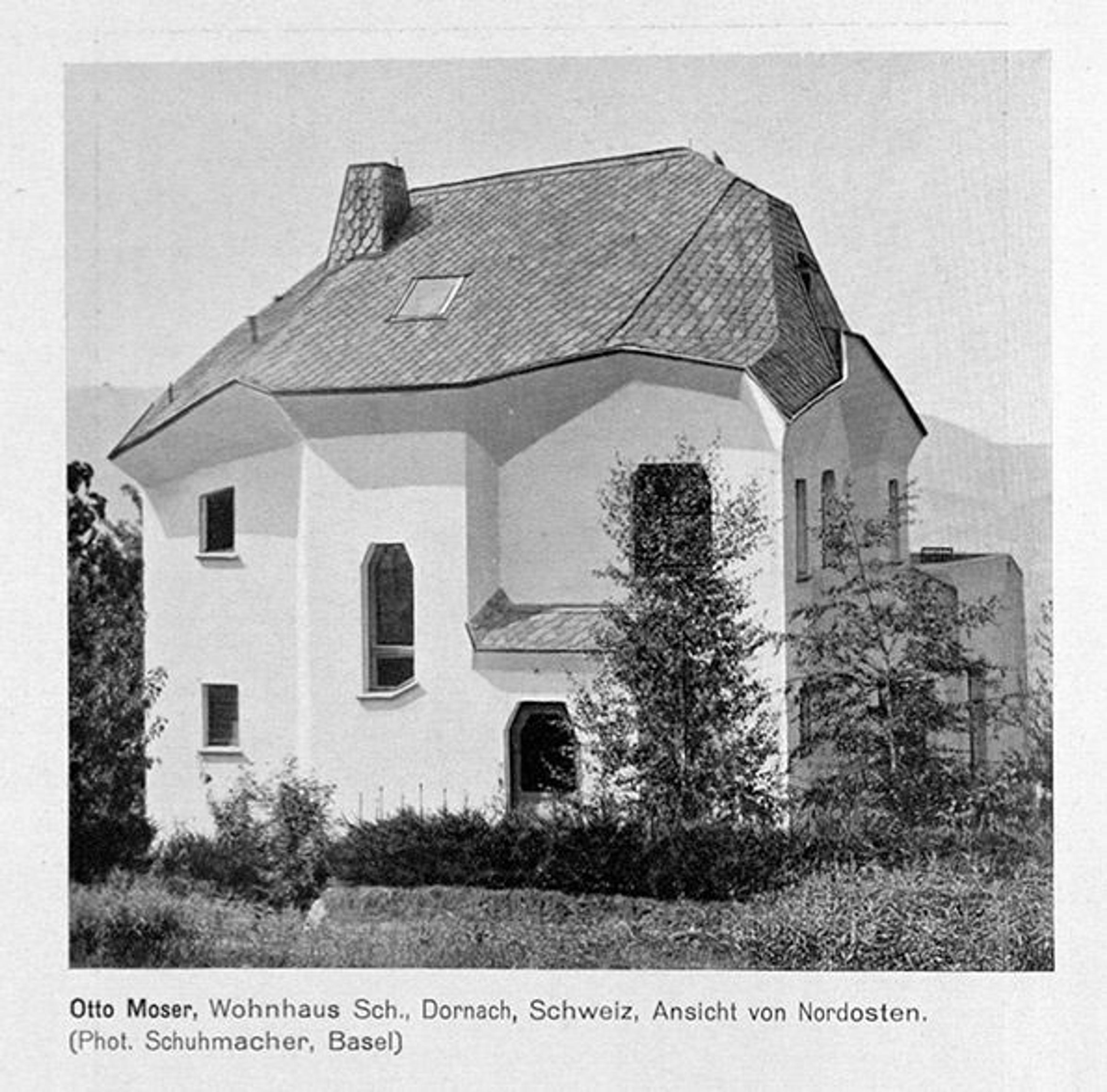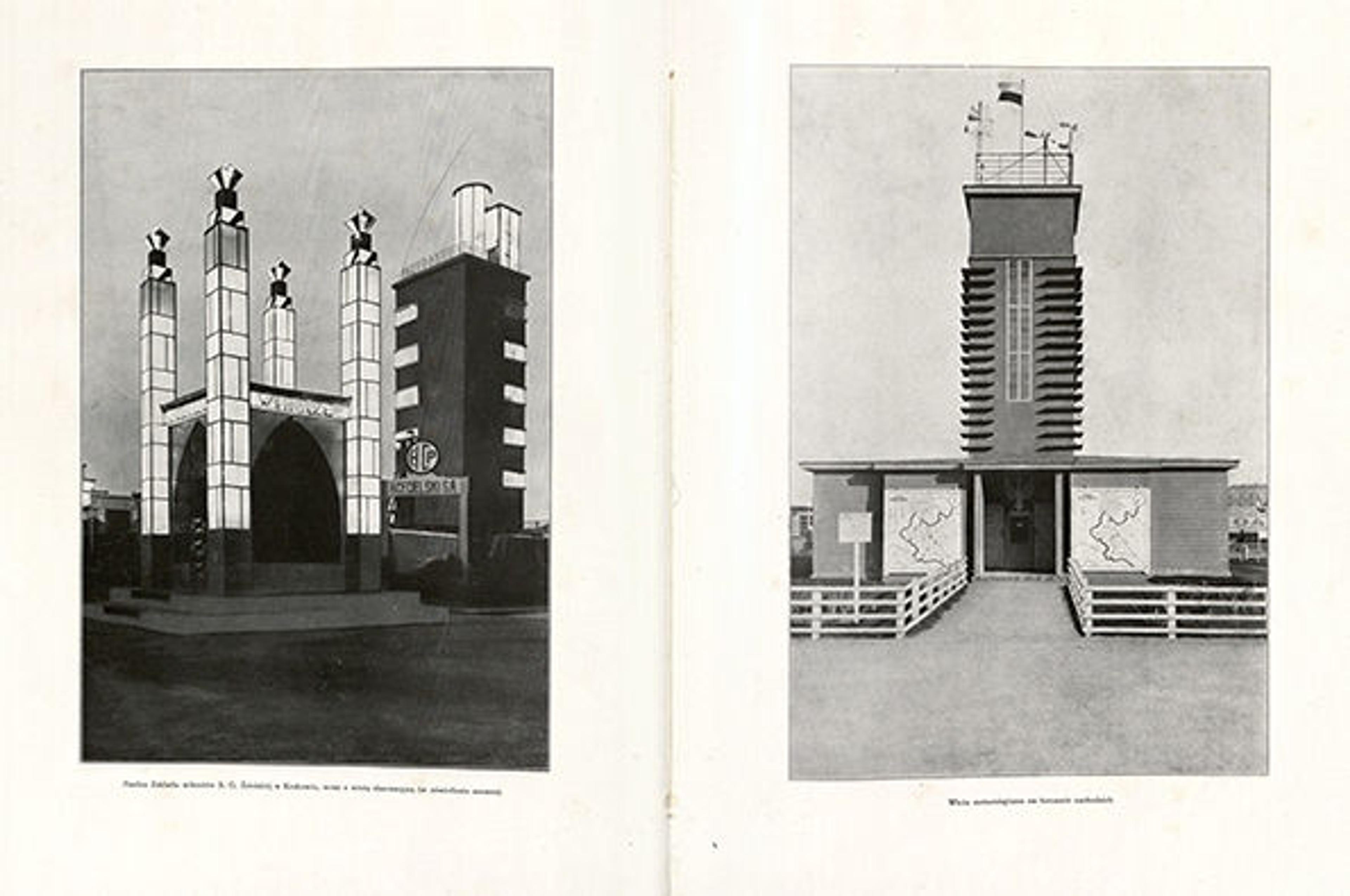Color, Design, Shape: Architecture from the 1920s and 1930s

Le Lido des Champs-Elysées. Paris: Éditions d'Art Mona, 1928. Advertising booklet for the private club published upon its opening in 1928. Watson Library Special Collections
«Watson Library currently has on display an international selection of architecture books on subjects including Bauhaus philosophy and Art Deco decor.»

Die Kunsthandwerkliche Förderung des Baumalers: die Förderung des Lehrlings in Werkstatt und Schule. Dresden: Im Verlage des Verbandes Sächsischer Vereinigungen Selbständiger Maler und Lackierer, 1929. Watson Library Special Collections
This colorful handbook, for example, is a guide to Bauhaus design and color theory for architecture and interior decoration. Contents include the psychology of color, how color affects space, house surface aesthetics, and typography. The plates—strongly evoking the Bauhaus style in muted colors—serve as color charts, house plan perspective views, and paint colors for facades.

Farbige Gestaltung durch Keimsche Mineralfarben. Lohwald b. Augsburg: Industriewerke Lohwald A.G., 1929. Watson Library Special Collections
Another color guide, the polychromatic booklet above titled Farbige Gestaltung durch Keimsche Mineralfarben, showcases the company's vibrant exterior paint products as though applied to whimsically illustrated, imaginary building facades representing industrial, residential, Classical, modern, Gothic, and Baroque architectural styles.

Architektonisches Gestalten: das neue Goetheanum in Dornach von Rudolf Steiner sowie Bauten und Inneneinrichtungen folgender Künstler. Stuttgart: Akademischer Verlag Dr. Fritz Wedekind & Co., 1933. Watson Library Special Collections
Another German architecture book currently on display is Architektonisches Gestalten. Dedicated to the memory of Anthroposophical Society founder Rudolf Steiner (1861–1925), it focuses on the group's then-recently completed second headquarters, the Goetheanum (designed by Steiner and completed posthumously), as well as the work of other architects of his circle in Germany, the Netherlands, and Switzerland. It features essays, floor plans, black-and-white lithographs of interiors and exteriors, and numerous views of the Goetheanum campus. A unique element of the structure is rounded forms without any right angles.

Rzeczy Piękne: organ Muzeum Przemysłowego im. dra A. Baranieckiego w Krakowie. Kraków: MMP im. dra A. Baranieckiego, 1925–32. Watson Library Special Collections
The current vitrine also showcases Polish Art Deco architecture. Published by Kraków's Museum of Science and Industry from 1925 to 1932, this issue of Rzeczy Piękne, volume eight, centers on the Poznań Exhibition of 1929, an annual industrial fair that began in 1921. In addition to the publication's distinctive cover, the content comprises numerous lithographs and cyanotypes illustrative of the Art Deco period. Highlights include images of pavilions representing municipal and manufacturing interests: bentwood furniture from Thonet, bookbinding from Piotr Grzywy of Kraków, and metalware and decorative items from the Museum of Science and Industry's collection.

Le Lido des Champs-Elysées. Paris: Éditions d'Art Mona, 1928. Advertising booklet for the private club published upon its opening in 1928. Watson Library Special Collections
Another catalog showcasing Art Deco design is this glamorous advertising booklet for the private club, Le Lido des Champs-Elyseés, designed by René F. Berger (1878–1954). Inspired by the Lido of Venice, this Parisian nightclub brought the amenities and style of the famed Italian beach resort to the center of Paris. Advertised as a venue with an "atmosphere of refinement essential to please the elite," Le Lido was patronized by European royalty, musicians, and other luminaries, including Noël Coward and American actor Adolphe Menjou. Through black-and-white photographs, the plates highlight the Art Deco decor including the swimming pool area, marble bar, ladies' and men's dining areas, gaming rooms, pergolas, Turkish baths, and beauty parlor. Carlo Cherubini contributed murals throughout the club. The pool at Le Lido was home to nightly performances, diving demonstrations, and aquatic tableaux. The publication's eye-catching embossed cover features gilded raised lettering and a colored engraving of the club's pool area and signature interior lighting. The Lido exists, in a slightly different incarnation, at the same location.
This festive YouTube clip of the movie Pour un soir (1931) shows the club's interior.
For more architectural titles, see Watson's holdings, which include recent acquisitions from contemporary architects Norman Foster, Zaha Hadid, Herzog & de Meuron, and Renzo Piano.
Holly Phillips
Holly Phillips is the collections manager for acquisitions in Thomas J. Watson Library.
Diane De Fazio
Diane De Fazio is a volunteer in the Thomas J. Watson Library.